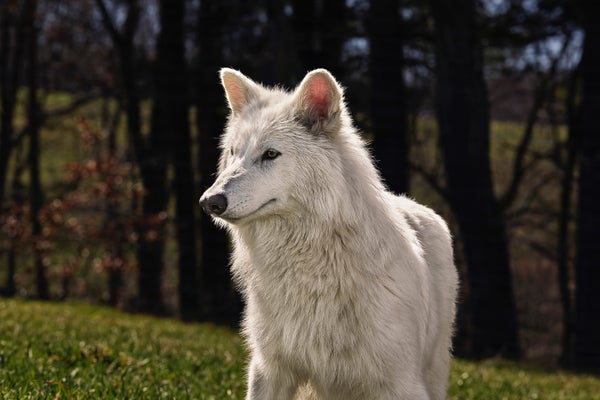De-Extinction of Dire Wolf
In a groundbreaking achievement, scientists have revived the dire wolf, an extinct species that disappeared approximately 12,500 years ago. This remarkable feat was accomplished by Colossal Biosciences, a Texas-based company, using advanced genetic engineering techniques. The two pups were named Romulus and Remus
About Dire Wolf
The dire wolf (Aenocyon dirus) was a large canine that roamed North America, dominating the ecosystem as a top predator. It resembled the grey wolf but was larger, with a robust build and distinctive features. Dire wolves hunted various large prey, including horses and bison. Their extinction is believed to have been influenced by human hunting and the decline of their prey species.
De-Extinction Process
Colossal Biosciences undertook a meticulous de-extinction process. They sourced ancient DNA from a 13,000-year-old tooth and a 72,000-year-old skull. Using this DNA, scientists reconstructed the genomes of the dire wolf and compared them to those of living canids, confirming the grey wolf as its closest relative. Gene editing techniques were employed to create specific traits associated with dire wolves.
Birth of the Pups
In October 2024, two male pups, Romulus and Remus, were born to surrogate dog mothers. A female pup named Khaleesi followed in January. The pups are currently being raised in a secure 2,000-acre facility, monitored by a team of experts. They exhibit distinct behavioural traits, preferring solitude over interaction with humans, which is consistent with the characteristics of their ancient ancestors.
Scientific and Ethical Considerations
The revival of the dire wolf raises critical scientific and ethical questions. While the pups share 99.5% of their DNA with grey wolves, they are not identical to their extinct counterparts. The definition of species is complex and often debated among scientists. The pups lack the social behaviours typical of wild wolves, raising concerns about their ability to thrive in natural environments.
Future Prospects
Colossal Biosciences aims to continue its de-extinction efforts, with plans to resurrect other species such as the woolly mammoth and the dodo. However, the success of these projects remains uncertain. The dire wolf pups may not represent a fully restored species but rather a glimpse into the potential of genetic technologies.
Technological Impact
The advancements in genetic engineering showcased by Colossal Biosciences could revolutionise conservation efforts. The ability to resurrect extinct species raises possibilities for restoring ecosystems and biodiversity. However, these technologies also prompt discussions about the implications of playing a role in nature’s evolutionary processes.
Month: Current Affairs - April, 2025
Category: Science & Technology Current Affairs







